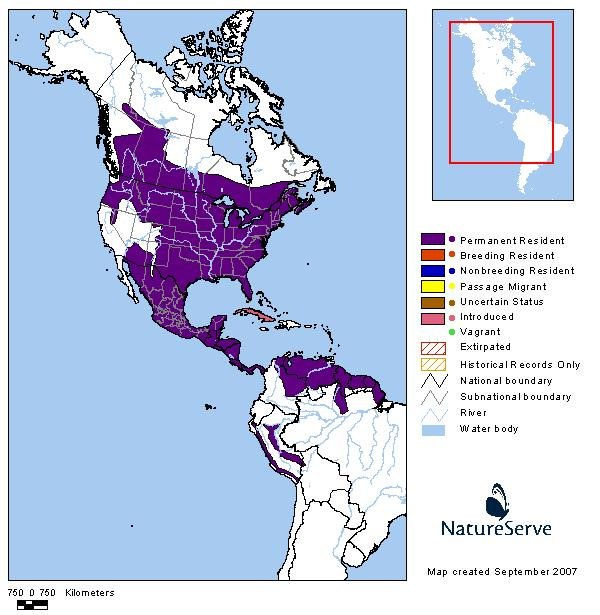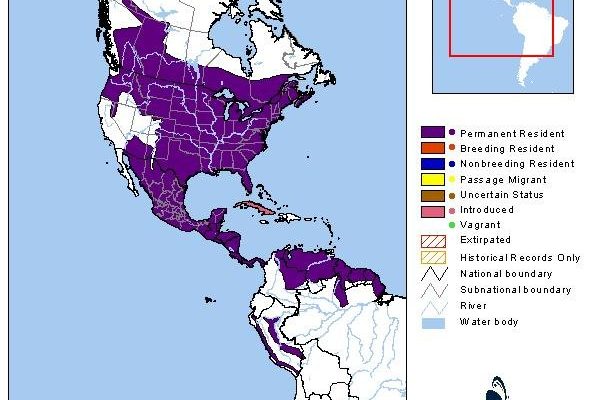
White-tailed deer, with their distinctive tails and slender bodies, thrive in a variety of habitats. From dense forests to open grasslands, these adaptable mammals are found across a vast range of North America. So, what exactly defines their living conditions? Let’s dive into their habitats and distribution to get a clearer picture.
What Is the Habitat of White-Tailed Deer?
White-tailed deer enjoy a wide range of habitats, which is a big part of their charm and survival. You might find them in lush forests, where they can hide among the trees and munch on vegetation. They love the cover provided by the underbrush, which helps protect them from predators.
Here are some key features of their typical habitats:
- Forests: Both deciduous and mixed forests are favorite spots. Deciduous forests offer an array of food and shelter.
- Grasslands: Open fields provide plenty of grasses, shrubs, and young trees, which are perfect for grazing.
- Wetlands: Marshes and swamps can also be home, offering unique food sources and water.
White-tailed deer are particularly adept at adapting their habits based on their surroundings. For instance, in suburban areas, they might become more nocturnal, venturing out at night to browse on gardens or shrubs in peace.
Geographical Distribution of White-Tailed Deer
You might be wondering just how far these deer spread across the map. White-tailed deer have an impressive range across North America, spanning from southern Canada all the way to the tip of Florida and westward to the Rocky Mountains. This broad distribution highlights their adaptability to different environments.
In the northeastern United States, you can find them in abundance in forests and farmland. In contrast, the Midwest is home to large populations that thrive in agricultural areas, while the south offers them warm weather and extensive wooded areas.
Interestingly, white-tailed deer populations have also increased in urban settings. It’s not uncommon to spot one wandering through a neighborhood, especially at dusk. This growth in populations can lead to challenges, like car accidents and overgrazing in gardens.
Factors Influencing Their Habitat Preferences
Several factors play a role in where white-tailed deer choose to live. The availability of food is paramount; after all, they need to eat! Their preference leans toward areas rich in vegetation, including tender shoots, acorns, and fruits.
Another important factor is cover. Deer need hiding places to protect themselves from predators, which can include wolves, coyotes, and even humans. They often gravitate toward areas where they can easily escape.
Weather also influences where deer can thrive. In harsh winters, you might find them migrating to more sheltered areas with food sources that are easier to access.
In summary, these creatures are skilled survivors that adjust their habitats based on food availability, safety, and environmental conditions.
Seasonal Changes in White-Tailed Deer Habitat
White-tailed deer also change their habitat preferences with the seasons, much like how we might dress differently in winter versus summer. During spring and summer, they often roam in open fields and forests with rich undergrowth, feasting on the fresh plant growth.
As fall approaches, things shift. They begin to navigate toward areas with abundant acorns and nuts, which are crucial for building up fat reserves before winter. In winter, they often retreat to thicker, denser forests where they can find shelter from the cold and still access food.
This seasonal movement helps ensure they have the best chance of survival throughout the year. It’s like they have a built-in GPS that guides them to the best dining spots, depending on the time of year.
Impact of Urbanization on White-Tailed Deer
With more people moving into areas that used to be the deer’s territory, urbanization has made a real impact on their habitats. White-tailed deer are incredibly adaptable, and as cities expand, they often find new homes in suburban neighborhoods.
While this might seem like a win for the deer, it comes with challenges. Increased interactions with humans can lead to dangerous situations, such as deer-vehicle collisions. It’s not unusual for these graceful animals to munch on garden plants, which can frustrate homeowners.
On a positive note, many communities are becoming more aware of these issues and are working on strategies to manage deer populations humanely and reduce conflicts.
Conservation Efforts and Their Effect on Deer Populations
Conservation plays a crucial role in maintaining healthy populations of white-tailed deer. Various organizations and governmental bodies are involved in protecting their habitats and ensuring sustainable management practices.
Efforts like reforestation, habitat restoration, and controlled hunting help keep deer numbers in balance with their surroundings. These practices not only benefit the deer but also other wildlife species that share their habitats.
It’s interesting to note that well-managed deer populations can positively affect ecosystem health. By grazing on particular plants, they can help maintain balance within the vegetation, promoting biodiversity.
Conservation strategies remind us of the importance of living in harmony with wildlife, ensuring we maintain the delicate balance of our ecosystems.
Understanding where white-tailed deer live gives us a deeper appreciation for these marvelous creatures. Their habitats span a wide range, from dense forests to suburban neighborhoods, showcasing their adaptability. By learning about their living conditions and the factors that influence their distribution, we can better understand their role in our ecosystem.
As we move forward, it’s essential to consider the impact of our actions on their populations. Supporting conservation efforts and being mindful of their needs can ensure these gentle creatures continue to flourish for generations to come. So, the next time you see a white-tailed deer, take a moment to appreciate its home and the intricate web of life that surrounds it.

